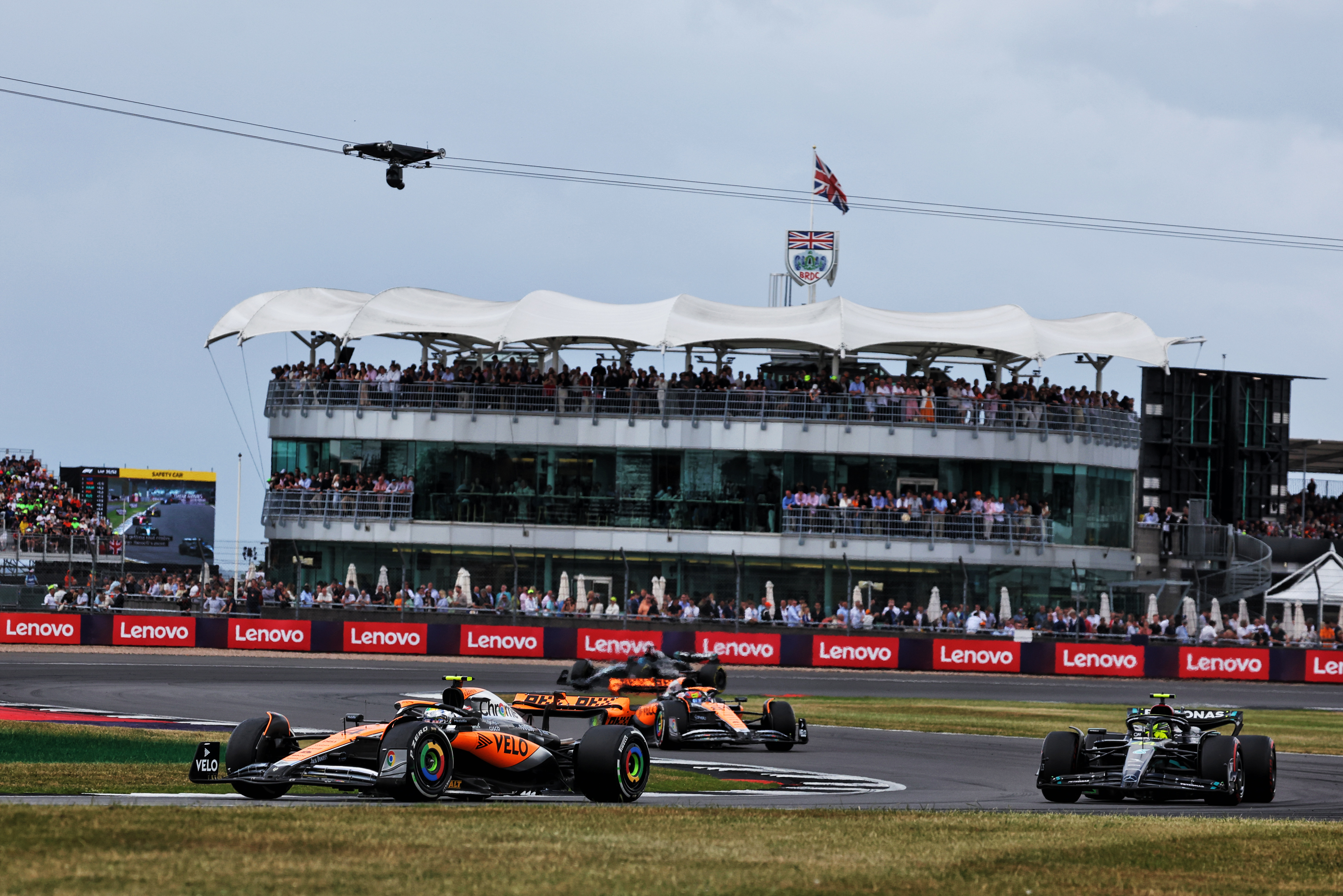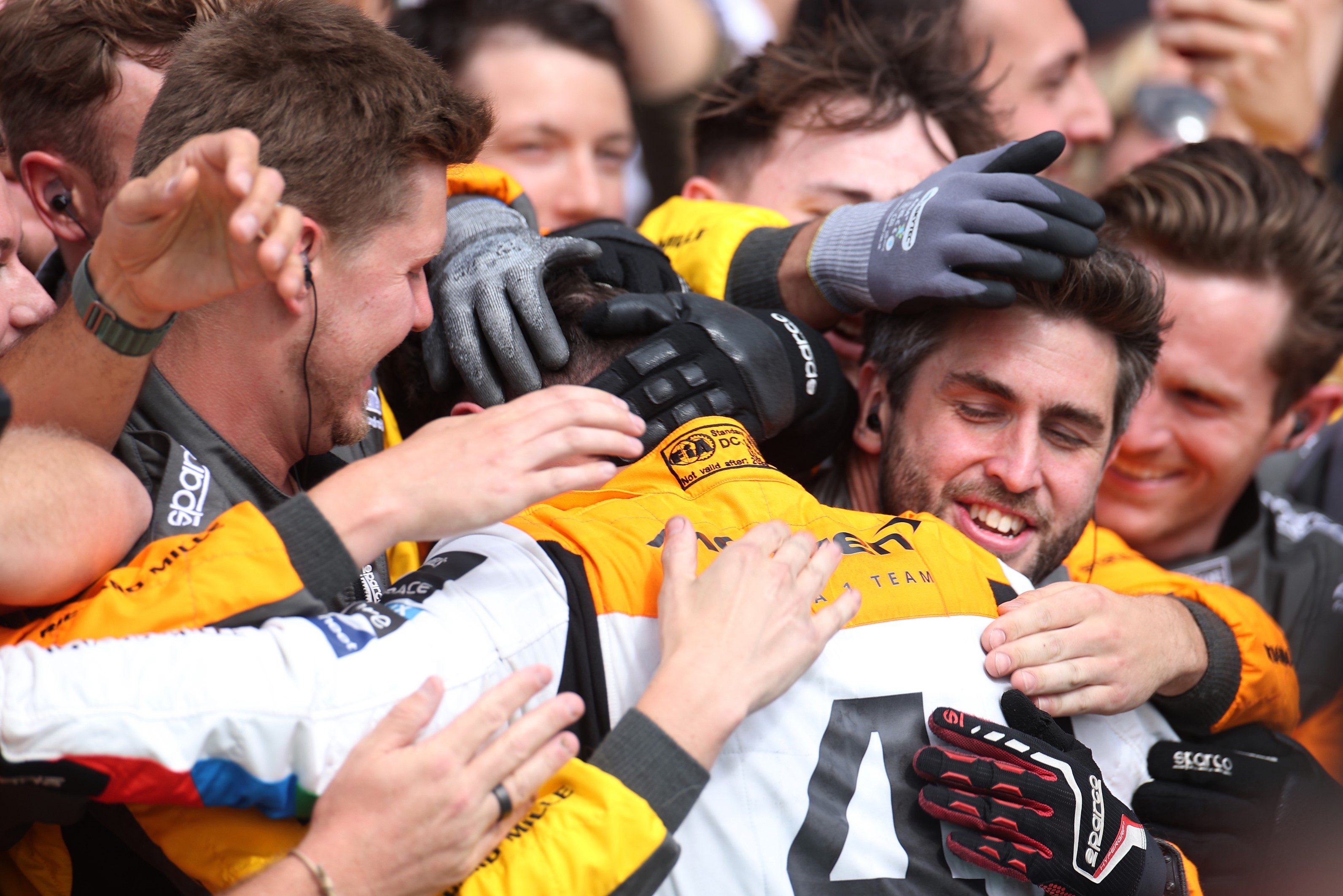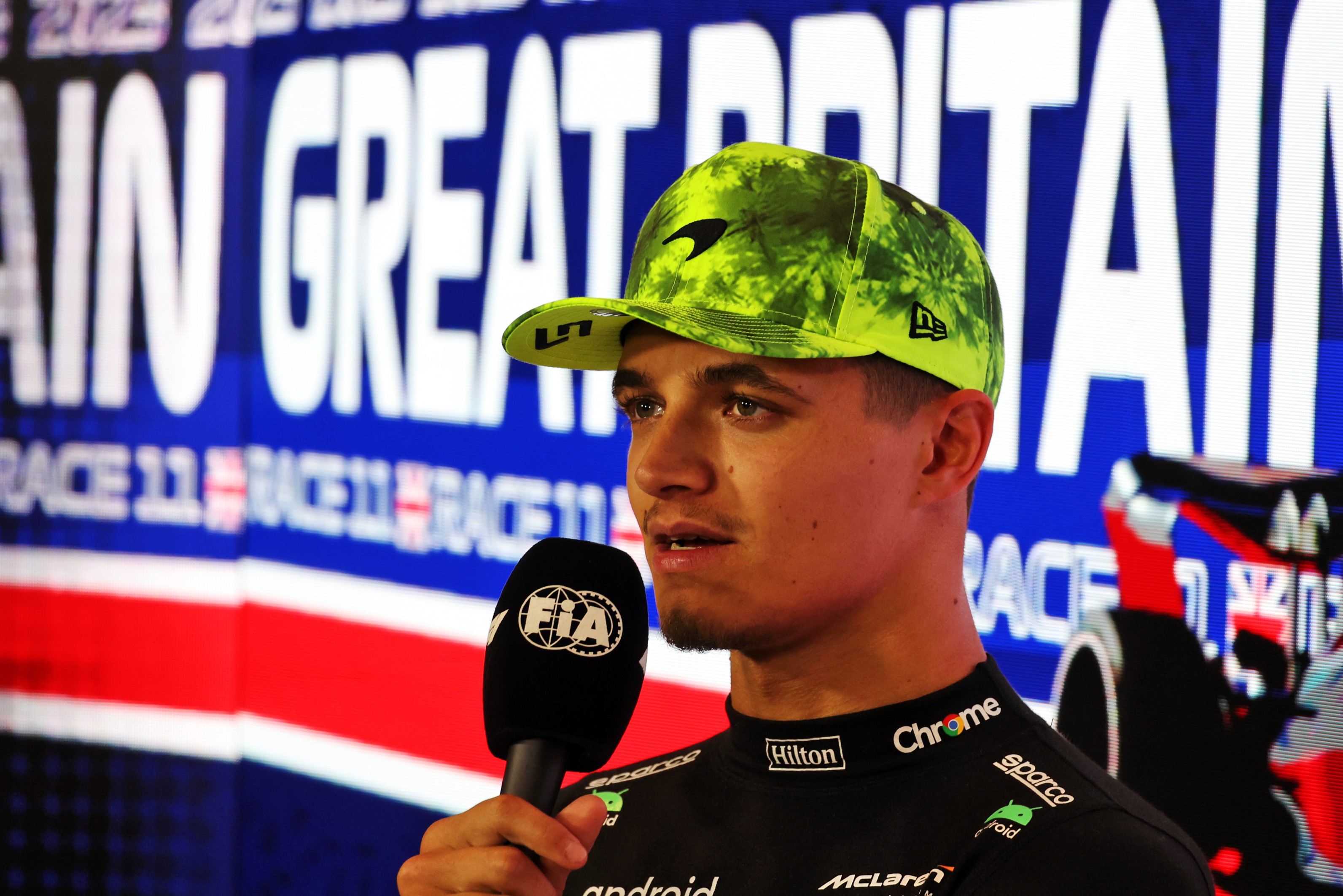Up Next

McLaren didn’t put Lando Norris onto soft tyres for the final stint of the British Grand Prix despite his requests over the radio because of the “operational complexity” and associated risk of a late switch of compound.
The team was adamant a switch to hards was the correct call even when challenged by Norris when he was initially told to pit under the virtual safety car. But when the VSC – activated for the recovery of Kevin Magnussen’s Haas when Norris was just completing his 32nd lap – was subsequently upgraded to a full safety car, softs potentially became the better choice for what proved to be a 14-lap run to the chequered flag after the restart.
At that point, McLaren recognised the length of the green-flag running after the restart would be shorter and tyre warm-up would be a bigger struggle at the restart after a longer neutralisation of the race. But as Norris was already on the Hangar Straight and heading to the pits, it was deemed too risky to scramble the pit crew to switch the hards that were awaiting Norris for a set of softs.
Norris had already asked the team if it was “confident” hards were the right choice over the radio at the start of his inlap. But after the safety was declared he again questioned the decision by saying “I think a soft tyre, just thinking about it please, soft tyre”.
But McLaren stuck with the hards, with Stella explaining that making a late switch could have led to a loss of time.
“Initially there was a virtual safety car, and under the virtual safety car we were happy to go on hard tyres because it wouldn’t have been a problem in terms of warm-up,” said Stella when asked by The Race to explain the strategy.
“Then, at some stage, the virtual safety car was converted into a safety car when we were pitting and everything was set at the pitstop to put [on] hard tyres and a last-minute change to soft would have been an operational problem.

“We thought this is not one of those situations in which the hard tyres have a massive difference from a warm-up point of view to soft. If you can manage the first few corners then you go through corner nine [Copse] you start to generate a decent amount of temperature so we kept the decision simple.
“We didn’t want to change the allocation of tyres at the pitstop because this could have meant a significant delay, accepting that it could have cost us at the restart maybe one position, but that was the most sensible thing to do.”
Stella added that making such a change would have added to the “operational complexity” of the pitstop.
“It’s because you had the pitstop crew ready with the hard tyres ready,” he said.
“If you make a call of soft tyres, it means the guys that need to pick the tyres would have to rush in the garage, remove the blankets, bring the tyres back. It can create a bit of a situation and it could have delayed the pitstop.”
Norris came under intense pressure from soft-shod Lewis Hamilton’s Mercedes at the restart, but managed to hold on to second place. After that, the situation stabilised as he had temperature in his tyres and had the pace to maintain the position, particularly once Hamilton’s rear tyres started to fade.

After the race Norris questioned the decision and felt that running softs would have made that spell after the restart much less pressured.
As he was already considering softs even before the VSC became a full safety car, it’s no surprise that Norris was confident that even though the hard call ultimately worked out, there is a need to analyse the decision.
“It’s a very difficult one to answer,” he said when asked if it was the right call in hindsight.
“Would I have preferred a soft? Would a soft have made me be under less stress for the first three laps after the safety car? I think absolutely.
“I didn’t have a new soft. We would’ve been in the same position [as the cars around me on used softs], so I don’t see why we shouldn’t have done it.

“I felt like we put ourselves under a lot more pressure to try to get a hard tyre to work on a safety car restart with only 10 laps to go pretty much.
“It’s one we’ll talk about. I was telling them to think of the softs quite a bit, insinuating it as much as I could. But in the end they just told me ‘you’re on the hards’. So not really what I wanted, but it still worked out.”





